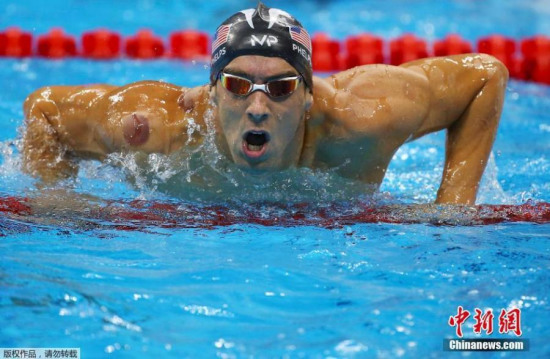
Michael Phelps of the U.S. is seen with red cupping marks on his shoulder and back as he competes in the men's 4 x 100m freestyle relay final at the 2016 Rio Olympics in Rio de Janeiro, Brazil, Aug. 7, 2016. (Photo/Agencies)
A traditional Chinese therapy known as cupping has taken the 2016 Rio Olympics by storm, with people wondering about the large red circles on the backs or shoulders of some Olympians.
The elite athletes spotted bearing organ-sized red circles on the body included world swimming champion Michael Phelps who has amassed 23 gold medals.
What are these red spots? Why have they come under the flashlight all of a sudden?
The marks are the result of cupping, a therapy said to have originated in Egypt but developed and flourished in China.
Originally, cupping involves the use of a flammable material. In practical operation, the flammable material, often a piece of paper, is clamped by a pair of forceps and lit. The flaming material is then placed in a bronze or bamboo cup and quickly removed from it, and the cup is placed on the skin. Fire heats the inside of the cup and a vacuum is created by the air cooling down and contracting.
Today, glass or plastic cups are used instead of bronze or bamboo ones, while an aspiration column is used instead of flaming a piece of paper.
Running for centuries, cupping is a common practice in China that can be found in beauty salons, hospitals, Chinese medical centers, etc. People use this therapy to get rid of stiff necks, sore muscles and back pain.
Athletes say the treatment can ease pains and aches and speed up recovery from the physical fatigue of constant workout and race.
The marks are regarded as "badges of honor", as they testify to hard workouts and sore muscles.
Cupping has gained popularity among foreign athletes through recent years.
Former U.S. team swimmer Natalie Coughlin said suggested Phelps use the practice to ease the sore muscles a decade ago. She first knew about the practice from members of the Australian swimming team.
According to the 33-year-old veteran athlete, the treatment has become an integral part of his training regime and helps him recover more quickly after races.



















































